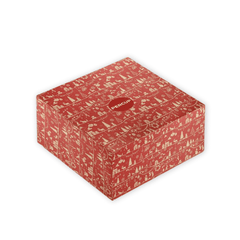Essential Ingredients
- High-Quality Matcha Powder – For the best taste and vibrant green color, choose ceremonial-grade matcha
- Milk or Dairy Alternatives – Whole milk, oat milk, almond milk, or soy milk all work well—pick your favorite!
- Hot Water – Aim for a temperature between 175°F and 185°F (just below boiling)
- Sweetener (Optional) – Try honey, maple syrup, agave, or simple syrup to add a touch of sweetness.
- Vanilla Extract (Optional) – A few drops can add extra depth and sweetness.
Necessary Equipment
- Matcha Whisk (Chasen) or Electric Frother – These help create the perfect frothy texture.
- Fine Mesh Sieve – Sifting your matcha prevents clumps.
- Ceramic Matcha Bowl (Chawan) or Small Mixing Bowl – For whisking the matcha and water together.
- Milk Frother or Steam Wand – Essential for getting that creamy microfoam.
- Measuring Spoon or Digital Scale – Helps ensure accurate measurements.

Step-by-Step Guide to Making a Café-Quality Matcha Latte
Step 1: Choose the Right Matcha Powder
- The foundation of any great matcha latte is the quality of the matcha powder. Opt for ceremonial-grade matcha from Japan—regions like Uji (Kyoto) and Nishio are known for producing top-tier matcha with a naturally sweet flavor and eye-catching green hue.
Step 2: Sift the Matcha Powder
- Sift 1 to 2 teaspoons of matcha powder through a fine mesh sieve into your bowl. This quick step eliminates clumps and ensures a smooth final result.
Step 3: Whisk the Matcha
- Heat 2 to 3 ounces of water to 175°F – 185°F / 80°C – 85°C (just below boiling).
- Pour the warm water over the sifted matcha.
- Whisk in a zigzag (M or W) motion using a bamboo whisk (chasen) or electric frother. Continue until the mixture is frothy and evenly blended.
Step 4: Heat and Froth the Milk
- Warm 6 to 8 ounces of your preferred milk to about 150°F / 65°C.
- Use a milk frother, steam wand, or hand whisk to froth the milk until it becomes light and creamy.
Step 5: Assemble the Matcha Latte
- Pour the frothed milk into your favorite mug.
- Slowly add the whisked matcha mixture.
- Stir gently to combine.
- If desired, sweeten with honey, simple syrup, or agave.
- Optional: Add a few drops of vanilla extract for extra flavor depth.

Pro Tips for the Best Matcha Latte
- Use Fresh, High-Quality Matcha – Store your matcha in an airtight container, away from heat and sunlight, to maintain its flavor and vibrant color.
- Don’t Use Boiling Water – Water that is too hot can turn your matcha bitter. Stick to 80°C – 85°C for the perfect taste.
- Adjust the Sweetness – Matcha’s earthy flavor can be beautifully balanced with just a touch of sweetness.
- Master the Whisking Technique – Whisk in quick zigzag motions to get that coveted foam on top.
- Experiment with Different Milks -
- Oat Milk – Creamy and slightly sweet, adds a rich texture.
- Almond Milk – Light with a hint of nuttiness.
- Soy Milk – Thick and protein-rich, perfect for a smooth latte.
- Coconut Milk – Creamy with a subtle tropical flair, ideal for a refreshing twist.
- Whole Milk – Classic, balanced, and velvety.

Health Benefits of a Matcha Latte
Not only is a matcha latte delicious, but it also comes with some impressive perks:
- Rich in Antioxidants – Matcha is packed with catechins that protect against oxidative stress.
- Metabolism Boost – Green tea can support fat burning and steady energy levels.
- Enhanced Focus & Calmness – High levels of L-theanine encourage relaxation without making you sleepy.
- Supports Heart Health – Regular green tea consumption may help improve cardiovascular function.
Common Mistakes to Avoid
- Using Low-Quality Matcha – Culinary-grade matcha often tastes bitter and looks dull. Ceremonial-grade is well worth the extra investment.
- Not Whisking Properly – Skipping or rushing the whisking step can leave you with clumps and a gritty texture.
- Adding Too Much Sweetener – A light touch of sweetness is best for complementing, not overpowering, matcha’s umami flavor.
- Overheating the Milk – Milk that’s too hot can scald and lose its natural sweetness. Aim for around 150°F to keep the taste just right.
Conclusion
Making a café-quality matcha latte at home is simpler than you might think. With ceremonial-grade matcha, proper whisking, and perfectly frothed milk, you can create a smooth, creamy, and flavor-packed latte that rivals any coffee shop’s offering. Experiment with different milk varieties and sweeteners to find your perfect matcha latte. Enjoy!




















